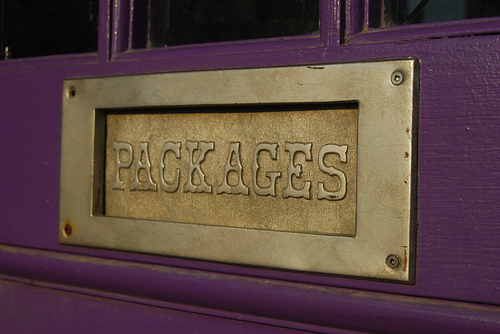Unless you work in a warehouse or drive a truck full of pallets of products, you probably have never given much thought as to how these items are packaged, shipped and/or transported. Believe it or not, there is a market for the product that wraps the product that you purchase – and it is an ever growing market. The most popular new form of packaging is known as Stretch Hoods.

What is Stretch Hood?
A stretch hood is a tube of film sealed on one end, which is stretched over a palletized load to secure the contents to the pallet. The film is cut to the appropriate length, heat sealed on the top end, and gathered on four ‘fingers.’ These fingers stretch the film in the horizontal (transverse) direction until the film dimensions are slightly larger than the load dimensions, then draw the stretched film down over the pallet, unrolling it as they go.
By varying the unrolling rate, a degree of vertical (machine) direction stretch can be obtained to better hold the load on the pallet. Stretch Hoods creates a high packaging flexibility, reduces transport and storage damage, excellent protection against dirt and moisture, cost-saving due to usage of thinner film, smaller environmental footprint and less energy consumption, easy maintenance, and high performance machines – often packaging 100-200 loads per hour versus 60 loads per hours for stretch wrap.
From the perspective of those involved in the shipping and transport business, as well as those seeking the best way to ship their products, stretch hoods have become one of the fastest growing pallet stabilization and packaging systems. Due to the appropriate force and flexibility, building materials and heavy-duty shipping sacks in particular have seen a rise in popularity of stretch hoods.
Specific applications include: bricks, stones, shingles, bagged concrete, and bagged resin. And, appliances have also seen high growth of stretch hoods. Also, for many shipping product, the clarity of the film help companies identify errors or product damage and enable constant brand exposure.
A Sustainable Packaging Solution
From the focus of technology, the global sustainability initiative streamlined new stretch hood film technology and formulations to enable a new generation of stretch hoods that offer economic benefits using less film per load, improved protection, and exceptional clarity for display in retail outlets. In some applications, compared with conventional shrink film, stretch film and cardboard, stretch hood film offered more than a 30% cost reduction.
Continuing to look at this technology from a different perspective – what does that mean to our environment? In a time where industry, countries, and even individual families are looking for ways to limit their carbon footprint on this earth, how then does this new technology measure up? The amount of greenhouse gases emitted due to various activities and the effect of these gases on the environment and climatic conditions on earth is measured as Carbon Footprint.
Greenhouse gases are produced when fossil fuels are burnt in large quantities. A primary carbon footprint results from the direct emission of CO2 into the atmosphere as a consequence of an individual’s activities such as driving a car or burning logs.
A Secondary footprint is indirect emission i.e. the emission of gases by industries and factories which produce consumer goods and industrial goods.The production of stretch hoods has noted that one of the benefits of this product is that is has lower energy consumption and higher efficiency. As less product is used and significantly less time is taken on a machine to wrap products (100-200 loads per hour versus 60 loads per hours for stretch wrap), companies who produce and those who utilize the stretch hoods can identify a direct deduction in their carbon footprint.
So next time you are perusing your favorite warehouse, take a look at the shelves full of pallets – see if you can’t find the ones that may be using this Stretch hood technology – they will be the ones that you can actually see the product within. Then why not consider sending kudos to those companies that are using this more efficient technology – for, maybe without even knowing it, they are doing a small bit to lessen their carbon footprint. Why not think twice about purchasing these products and doing a little bit to lower your own as well.
Featured images:
License: Creative Commons
image source
This article was written by Noel Rasulo, who has expreince in flexible packaging- stretch hoods, printed shrink bundling, meat/cheese/food packaging- with an expertise in development, marketing and branding.

